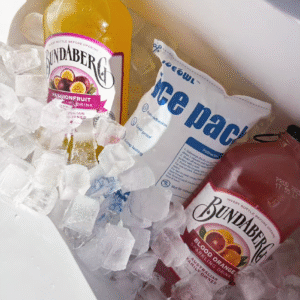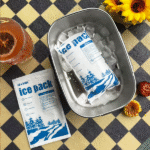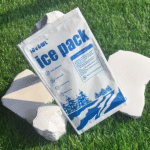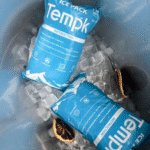Pack of 24 Dry Ice Ice Pack: How Many Do You Need?
You want a clear, practical answer. A pack of 24 dry ice ice pack can hold small‑to‑medium payloads frozen for 24–48 hours in a properly insulated shipper. Start with a tested sizing rule, validate with a short route trial, and adjust for ambient heat and void space. This guide blends calculation shortcuts with hands‑on pack‑out tips so you reduce complaints and shipping cost.
-
Pick the right quantity using simple rules and a quick estimator (24‑cell dry ice sheet long‑tail).
-
Lay out packs for uniformity with top/bottom or ring‑around methods (frozen shipping 48 hours long‑tail).
-
Meet 2025 safety and labels without over‑packing (UN1845 dry ice label long‑tail).
-
Tune for seasonality with insulation tweaks and hybrid cooling (EPS vs VIP insulation long‑tail).
pack-of-24-dry-ice-ice-pack-2025
How should you size a pack of 24 dry ice ice pack for 24–72‑hour lanes?
Short answer: Use one of two starting points—either a volume rule for 24‑cell sheets or a coolant‑to‑payload ratio for mixed forms—then validate with a logger. For 24‑cell sheets, begin at ~1 sheet per 5–8 L for ~24 h. For ratio‑based kitting, target 25–50% coolant vs payload mass for 24–48 h.
pack_of_24_dry_ice_ice_pack_art…
Pack_of_24_Dry_Ice_Ice_Pack_Tem…
Why it works: Heat leaks into your box over time. Better insulation and smaller voids slow that leak, so the same pack of 24 dry ice ice pack lasts longer. In summer or for 48‑hour routes, add packs or thicken insulation by 10 mm; in winter, you may safely reduce coolant after a monitored trial.
Pack_of_24_Dry_Ice_Ice_Pack_Tem…
Which estimator should you use for first‑run planning?
Rule of thumb (24‑cell sheets): Sheets ≈ (Volume_L ÷ 7) + transit/day factor ± adjustments for heat and insulation.
This keeps the math simple and gets you close on most parcel lanes. Start here for seafood, meal kits, or clinical samples in foam‑lined cartons.
pack_of_24_dry_ice_ice_pack_art…
| Estimator | Input | Output | What it means for you |
|---|---|---|---|
| Volume rule | Internal liters & hours | Sheets needed | Fast planning for 24‑cell formats; add 1 sheet per extra day.
pack_of_24_dry_ice_ice_pack_art… |
| Ratio rule | Payload mass & lane | Coolant % of payload | 0.25–0.50 : 1 covers 24–48 h in EPS/VIP shippers.
Pack_of_24_Dry_Ice_Ice_Pack_Tem… |
| Safety buffer | Season & openings | +10–25% packs | Cover hot docks, mid‑day pickups, or extra scans.
Pack_of_24_Dry_Ice_Ice_Pack_Tem… |
Field‑ready tips and choices
-
Maximize contact: Panel the payload on two faces (top + bottom) for flatter temperature curves.
-
Control voids: Keep headspace under 10%; air accelerates warming.
-
Pre‑condition: Chill the shipper and product before loading to avoid burning coolant on warm walls.
-
Vent safely: Never seal dry ice; provide a gas‑escape path to prevent pressure build‑up.
pack_of_24_dry_ice_ice_pack_art…
Real case: A dessert brand used one pack of 24 dry ice ice pack with a reflective liner for a 36‑hour lane at ~30 °C ambient. Center mass stayed between −9 and −6 °C, and melt complaints dropped by 70% within a month.
Pack_of_24_Dry_Ice_Ice_Pack_Tem…
What layout makes a pack of 24 dry ice ice pack perform best?
Direct answer: Sandwich the payload with packs on opposing faces—top + bottom for compact boxes or top + sides for flat trays. The “ring‑around” method gives the most uniformity for sensitive items but uses more coolant.
Pack_of_24_Dry_Ice_Ice_Pack_Tem…
Details that matter: Door‑open events at hot docks cause warm air gulps and can shave 10–15% off hold time if the box is under‑insulated. Use thicker EPS on hot faces or add a radiant liner to reduce spikes. For long lanes, consider blocks on the bottom for longevity with pellet toppers for quick pull‑down.
Pack_of_24_Dry_Ice_Ice_Pack_Tem…
pack-of-24-dry-ice-ice-pack-2025
Placement patterns that consistently work
| Layout | Best for | Why it works | Meaning for you |
|---|---|---|---|
| Top only | Last‑mile, small boxes | Simplicity; CO₂ sinks through payload | Easiest SOP; monitor hot weather |
| Top + bottom | 24–36 h frozen | Flattens gradients in compact loads | Reliable first choice |
| Top + sides | Flat trays, large faces | More surface contact across layers | Better for wide cartons |
| Ring‑around | High‑value shipments | Most uniform profile | Higher mass; premium lanes |
Practical user tips
-
Dense payloads: Pre‑freeze deeper; they warm slower but need more initial energy.
-
Small orders: Cut 24‑cell sheets to fit; sealing seams prevents leaks.
pack_of_24_dry_ice_ice_pack_art…
-
Training win: Add a one‑page pack‑out card at each station with photos of correct layouts.
Actual example: In a 30 L EPS shipper for 48 h summer lanes, top + bottom layout with 6–7 sheets held center mass sub‑zero with <2 °C variance.
pack_of_24_dry_ice_ice_pack_art…
How much energy is inside a pack of 24 dry ice ice pack?
Short answer: Plan around ~245 BTU per lb of dry ice (≈571 kJ/kg) during sublimation. This is the “fuel” that offsets your box’s heat load. Blocks last longer; pellets pull down temperature faster. Use blocks for long routes, pellets to fill gaps and speed the start.
pack-of-24-dry-ice-ice-pack-2025
Applying it without equations: Start with 5–10 lb per 24 h in an EPS/VIP parcel shipper at ~20–30 °C ambient. Multiply by days, then add 10–20% for hot seasons or frequent handling. Validate with two loggers (center + near wall) and tune ±10–20% for your SOP.
pack-of-24-dry-ice-ice-pack-2025
Quick planning table (copy for your SOP)
| Lane target | Ambient | Insulation | Starting weight | Why |
|---|---|---|---|---|
| 24 h frozen | 25–30 °C | 25–30 mm EPS | 5–10 lb | Fast pull‑down with pellets |
| 48 h frozen | 25–35 °C | 30–40 mm EPS/VIP | 12–18 lb | Mixed: block + pellet topper |
| 72 h frozen | 20–30 °C | 40 mm EPS/VIP | 20–28 lb | Blocks for slower loss |
Lightweight ROI tips
-
Add +10 mm EPS on hot faces before adding another 24‑pack.
-
Use a reflective liner to reduce radiant gains in summer.
-
Tighten void control to <10% to slow convective warming.
pack-of-24-dry-ice-ice-pack-2025
Safety and compliance: what must a 2025 pack‑out include?
Direct answer: Mark “Dry ice/Carbon dioxide, solid”, UN1845, and net kg on the outer box. Apply the Class 9 label and make sure the package vents CO₂—never airtight. For air carriage, follow IATA PI 954 and mode‑specific limits; many postal and parcel channels cap per‑piece dry ice.
pack-of-24-dry-ice-ice-pack-2025
Plain‑language checklist: Wear gloves and eye protection, work in ventilated areas, and never transport in sealed passenger compartments. Leave a small headspace under the lid so gas can escape without bulging the box. Train teams on acceptance checks and station‑ready portions with printed net weight per bag.
pack_of_24_dry_ice_ice_pack_art…
pack-of-24-dry-ice-ice-pack-2025
One‑page SOP you can paste
-
Pre‑chill shipper and payload.
-
Void ≤10% using dunnage.
-
Place packs above payload; CO₂ sinks through product.
-
Provide a vent path; never heat‑seal dry ice in a bag.
-
Mark/label: “Dry ice/Carbon dioxide, solid”, UN1845, net kg, Class 9.
-
Instrument first runs; adjust mass ±10–20%.
pack-of-24-dry-ice-ice-pack-2025
2025 updates and trends for pack of 24 dry ice ice pack
What’s new this year: Shippers are pairing ultra‑thin VIP panels with 24‑cell sheets to extend hold time without bulk. Smart temperature loggers with Bluetooth/cellular are becoming the default evidence for claims. Hybrid systems (small dry ice boosters + −20 °C or 2–8 °C PCMs) cut total coolant mass while riding out hot hand‑offs.
pack_of_24_dry_ice_ice_pack_art…
pack-of-24-dry-ice-ice-pack-2025
What changed that you can use now
-
Hybrid gels & PCMs: Smoothen temperature dips during sortation.
-
VIP on hot faces: Target heat ingress where it matters most.
-
AI lane modeling: Predicts seasonal hot spots and suggests pack layouts.
Market insight: Reusable cold‑chain systems keep growing, driven by pharma and e‑grocery. Standardizing around a pack of 24 dry ice ice pack improves kitting speed, reduces over‑packing, and simplifies inventory control across stations.
pack-of-24-dry-ice-ice-pack-2025
Frequently asked questions
Q1: Can one pack of 24 dry ice ice pack cover 72 hours?
Usually not without thicker insulation and mild ambient. Add a second pack or upgrade the box for national lanes.
pack-of-24-dry-ice-ice-pack-2025
Q2: Do I need a vented lid and CO₂ label?
Yes. Venting prevents pressure build‑up, and UN1845 + Class 9 + net kg markings are required for many modes.
pack-of-24-dry-ice-ice-pack-2025
Q3: Is many small cells better than one large block?
For uniformity and contact, many small cells win; use blocks to extend duration on long lanes.
Pack_of_24_Dry_Ice_Ice_Pack_Tem…
Q4: Can I mix dry ice with PCM packs?
Yes. Use dry ice for deep‑frozen stability and PCM to hold −20 °C or 2–8 °C zones.
pack-of-24-dry-ice-ice-pack-2025
Q5: How do I know I’m over‑packing?
If loggers stay below target the whole time and you have >20% coolant left on arrival, reduce 10–20%.
Pack_of_24_Dry_Ice_Ice_Pack_Tem…
Summary and recommendations
A pack of 24 dry ice ice pack is a reliable baseline for 24–48 h frozen lanes. Size with the volume rule (for 24‑cell sheets) or coolant‑to‑payload ratio (25–50%) and validate with loggers. Improve insulation and layout before adding mass, and label/vent every parcel for safety and compliance.
Next steps: Run a monitored test on your hottest route, apply top + bottom layout, add a reflective liner, and tune cell count with data. Ready to standardize? Contact Tempk for a route‑specific pack‑out card and SOP.
About Tempk
We design, test, and validate frozen and chilled shipping systems. Our configurable pack of 24 dry ice ice pack kits, liners, and pack‑out templates help you deploy faster with fewer temperature excursions. We back every rollout with training materials and data‑driven tuning for your lanes.
























